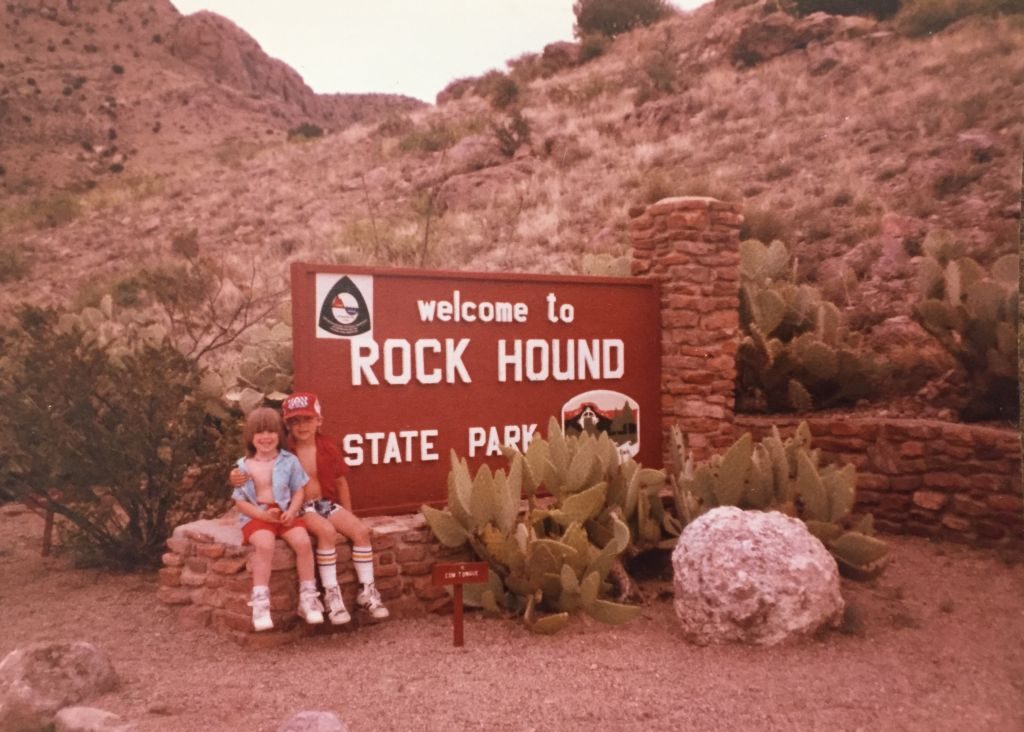My mom and dad raised their two kids living the #VanLife a good three decades before it started trending on social media. And, well, technically it was a bus.
I’m at a stage in my life where I find myself questioning the choices I’ve have made that got me here: an active, dedicated participant in the rat race of corporate life. I’ve spent years accumulating cool and trendy—but mostly useless—belongings in my tiny, overpriced apartment. I feel like I’m at a potential juncture in life. If I choose to do something different, that is. And I’ve been thinking a lot about where and how I want to live this one life I get.
Needless to say, #VanLife is seriously alluring to me. It feels like a natural part of me, having lived my early years on a bus, and I have a strong feeling I will get back there when the time is right.
I recently interviewed Mom about how and why she and dad did it. Here’s our story.
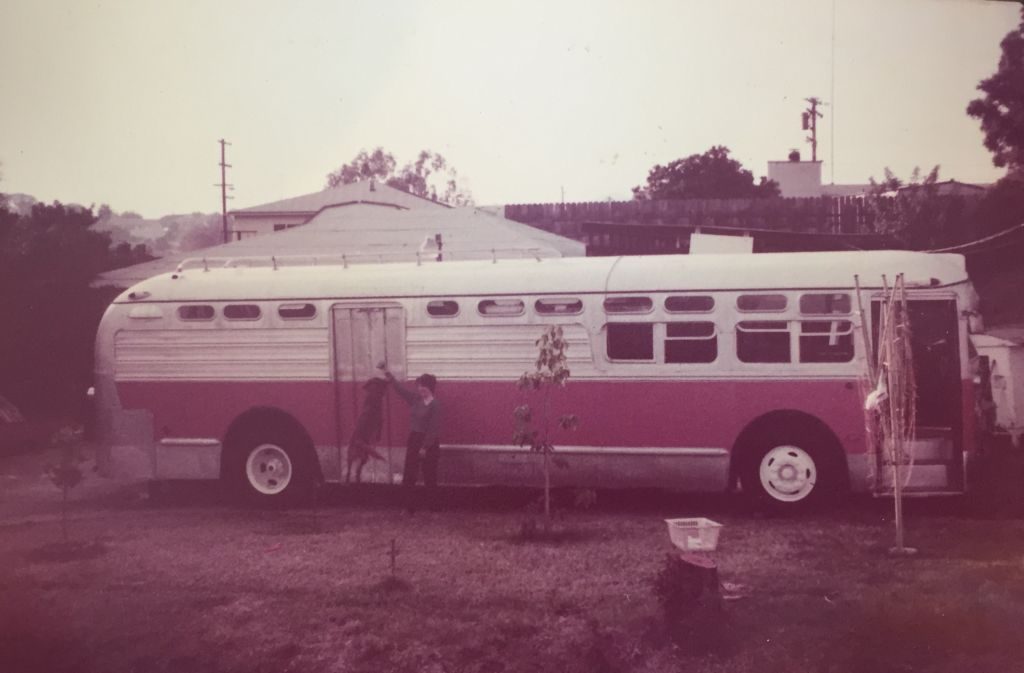
Seattle – Late 70S
Mom and Dad are living together planning for their future. Dad’s in the Navy and wants to retire in five years, when he turns 40. Mom, 21, supports his life dream of converting a bus into an RV (because buying a ready-to-go RV is just too easy; it’s basically cheating) and raising a family on it. (She really liked Dad and probably would’ve raised the kids anywhere and anyhow he wanted. I distinctly remember around the age of nine going to a marina and looking at sailboats to buy because they wanted to home school us from the ocean while sailing around the globe indefinitely. That plan never panned out.)
Levi, their darling first born, enters the scene in 1981. When the submarine Dad is working on is finished being built in Harbor Island, Seattle, it ventures down to its new home in the Port of San Diego, and the little family is relocated along with it.
San Diego – 1982
Retirement from the military soon follows, and the bus is purchased for a whopping $500 (more on that below). Dad starts the conversion.
Impressively, he does all the work himself—with some help from Mom—and only has to be taken to the hospital once for nearly chopping off his finger while cutting wood. Dad was very handy. He remodeled many things—practically everything—around the (spoiler alert!) house when we were growing up.
He passed away in 2004, and I called dibs on some his tools. I’ve hauled them across the country in a handful of moves since. They reside in an orange tool box that dons our last name in his handwriting. Despite its bulkiness and weight, the hand drill that you have to plug in (and sometimes use with an extension cord) is one of my favorite possessions. Those fancy, lightweight, cordless drills they sell today don’t hold a candle to Dad’s drill.
Meredith, their smart/kind/creative/hilarious second child (me) is born in 1983. If you’re following along, Mom, that PYT, is now 25. Dad is 39.
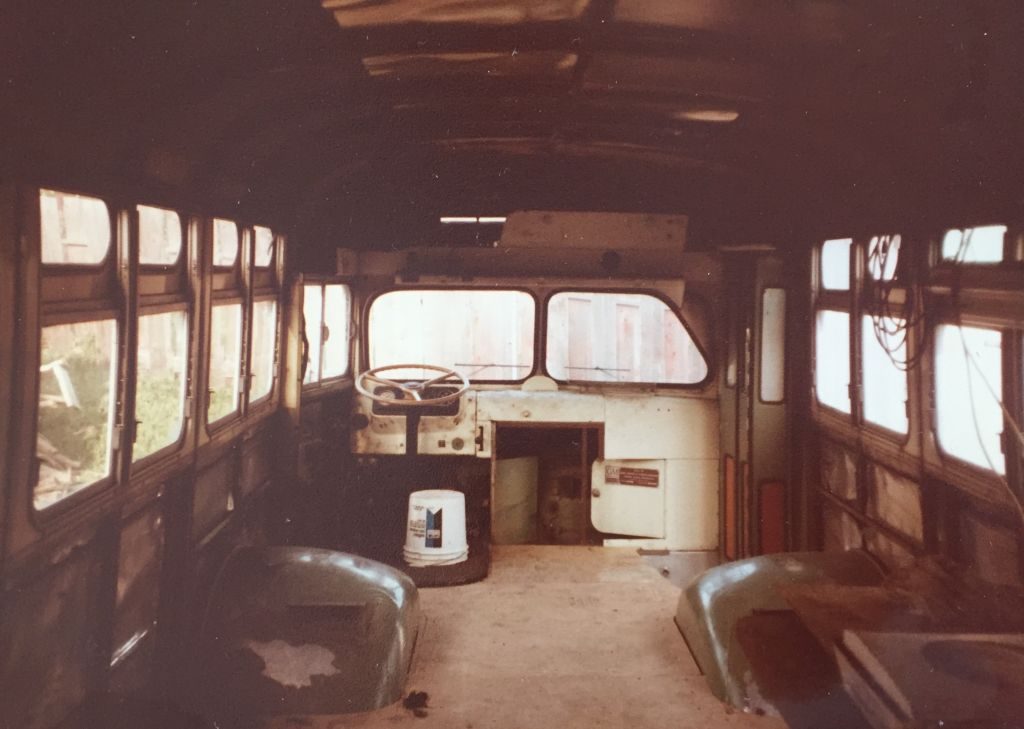
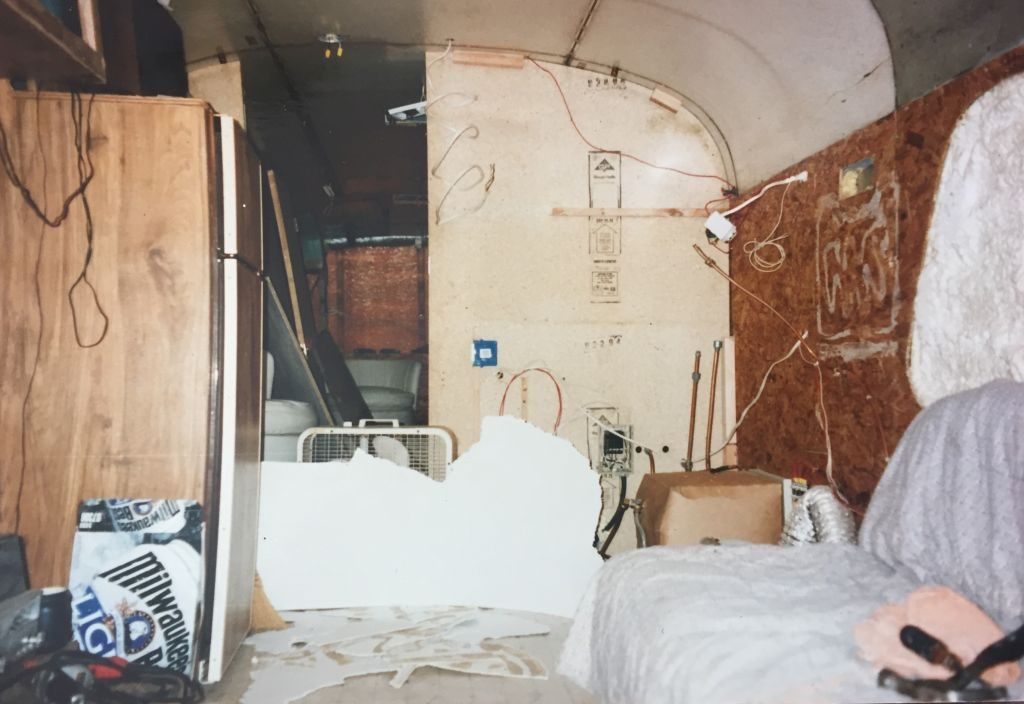
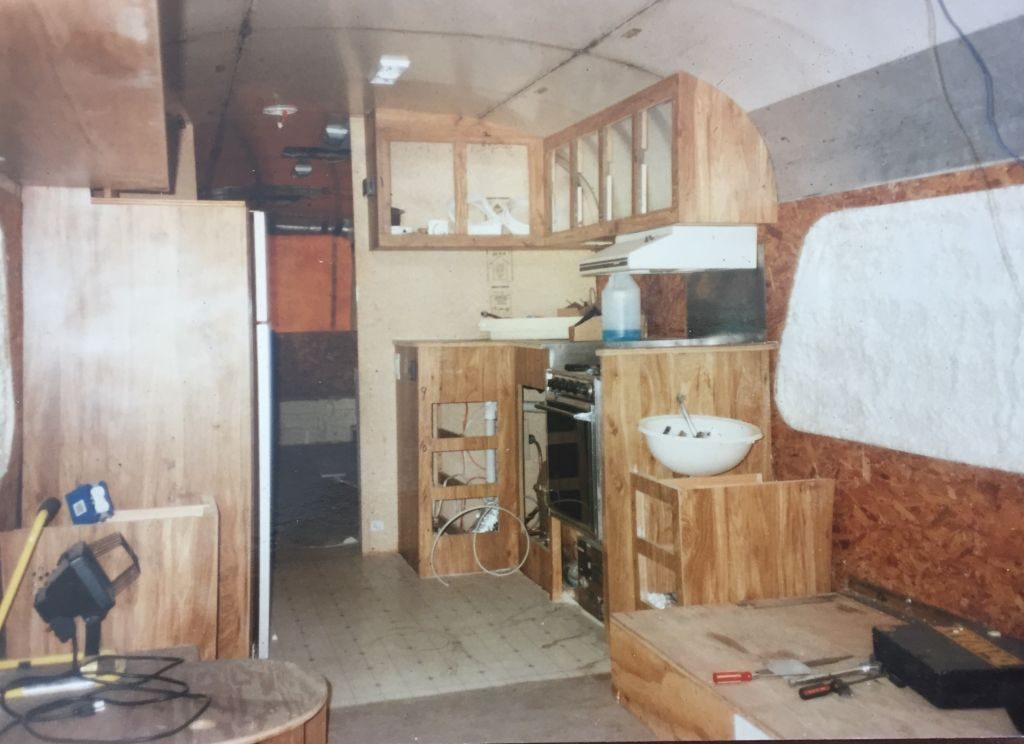
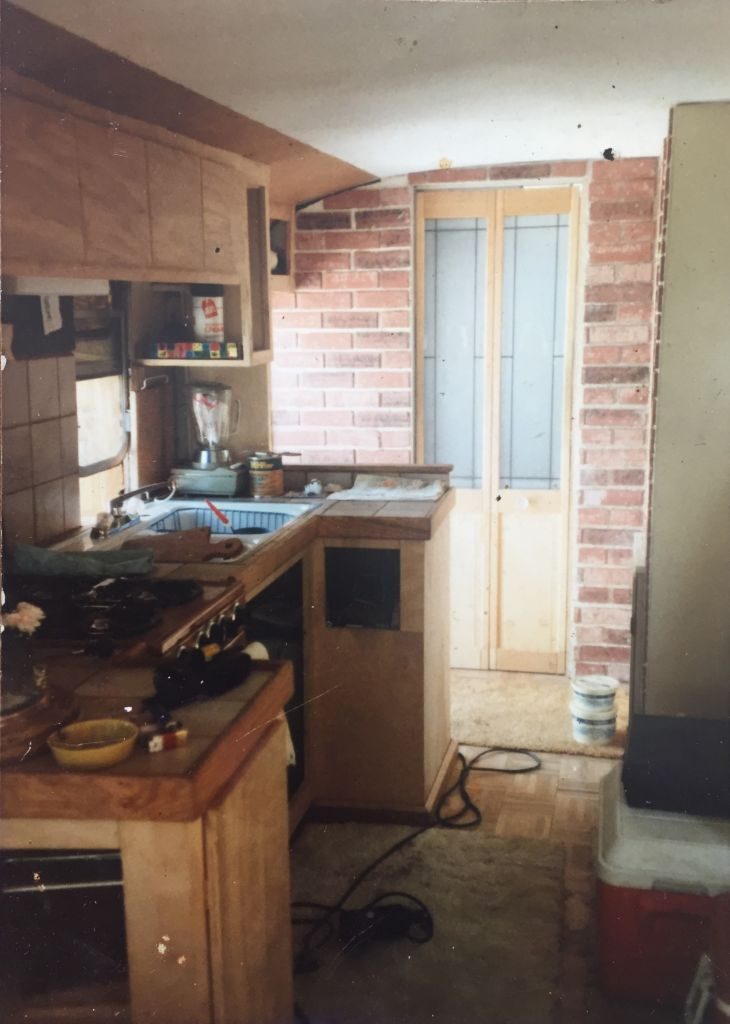
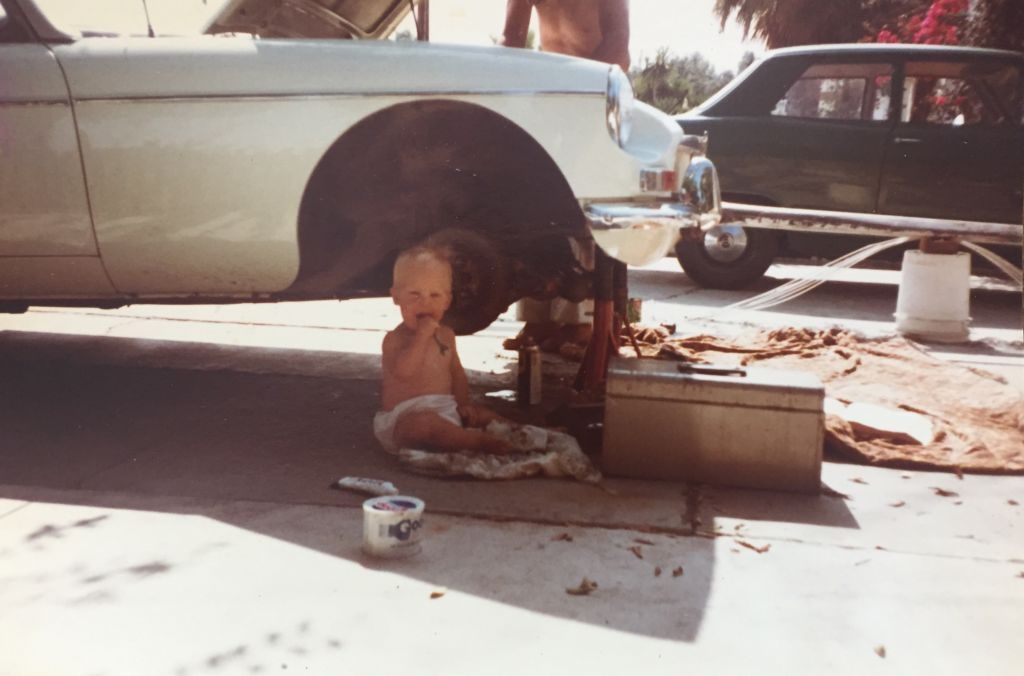
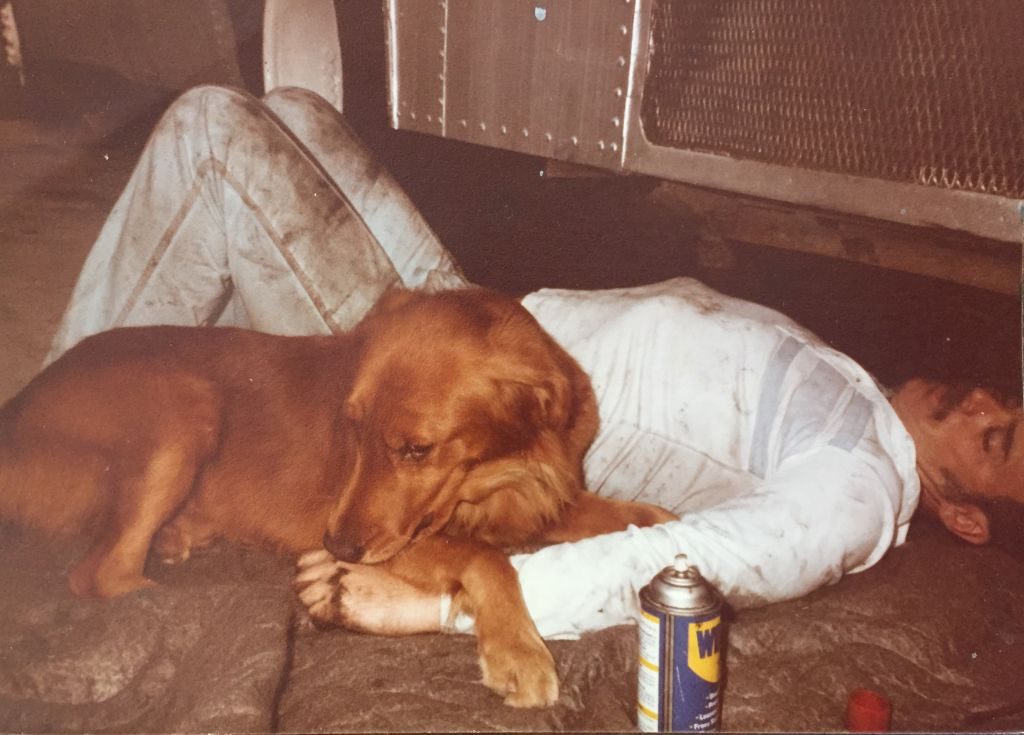
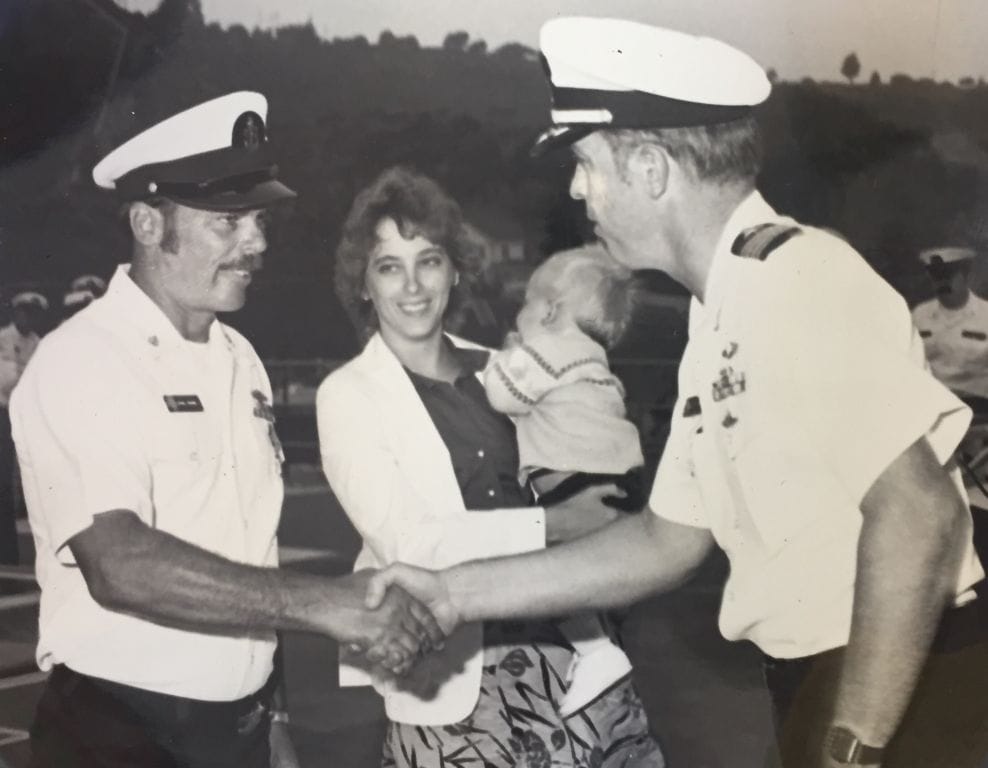

San Diego – August 1984
With a soon-to-be three-year-old and nine-month-old, my parents embark on #BusLife, heading up the West Coast back to Seattle. We stay here almost a year, living on the bus, spending time with Mom’s family and working to save money for the next leg of the journey.
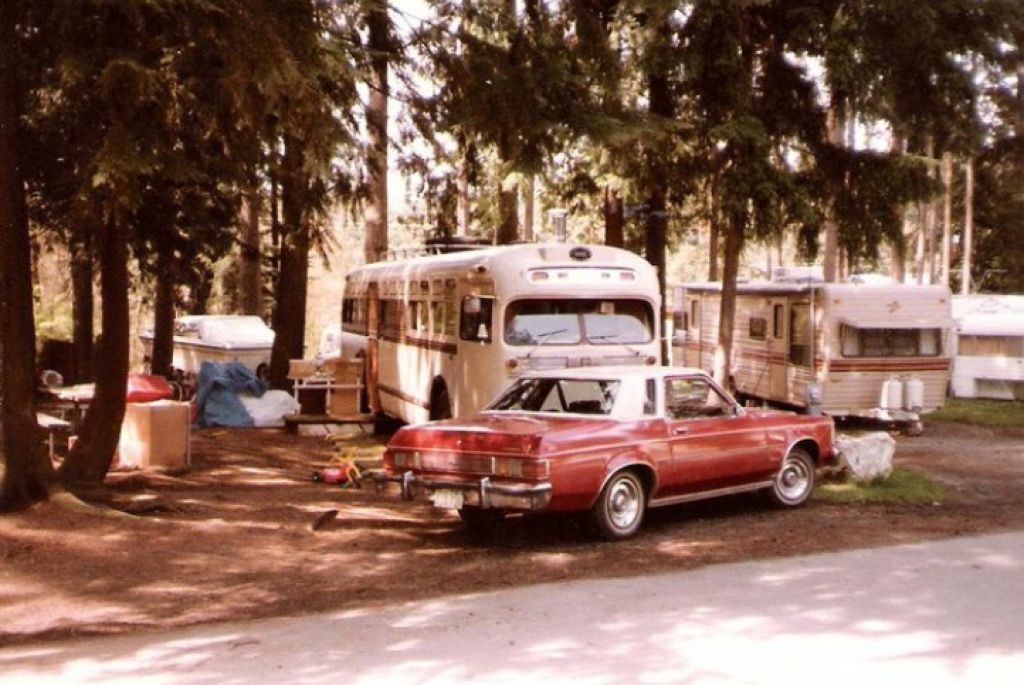
Seattle – June 1985
We set off along (and many times, across) the Canadian border to the other end of the country, where Dad’s family lives in upstate New York. This journey lasts two months because the bus keeps breaking down. Most notably, the transmission blows just east of Calgary, and we get stranded.
Ernfold, Saskatchewan, Canada – July 1985
A tow truck hauls the bus and us to this tiny town of “maybe 60 people,” Mom recounts. While stuck here for six weeks, Mom thinks #BusLife might be over. Eventually, a new transmission finds its way to us from Seattle via truck, train and eventually horse (she’s not making this shit up – I don’t think). Fresh out of cash and unable to use US checks or access any money from Canadian banks, Mom and Dad borrow $300 from some nice, neighborly people of Ernfold for gas to keep the dream alive and get back on the road. When we make it to a bank on US soil, in Minot, ND, they wire the money back to Canada and pay grandma back for sending us the transmission.
Side note: the nice couple who let us borrow cash also let us adopt their cat, Bonnie. I never knew my childhood cat was Canadian until I interviewed mom for this story! This explains a lot. She was the nicest cat ever, a black and orange Calico. The mostly white Calico we got after she passed, Angel, was a devil compared to Bonnie, naturally.
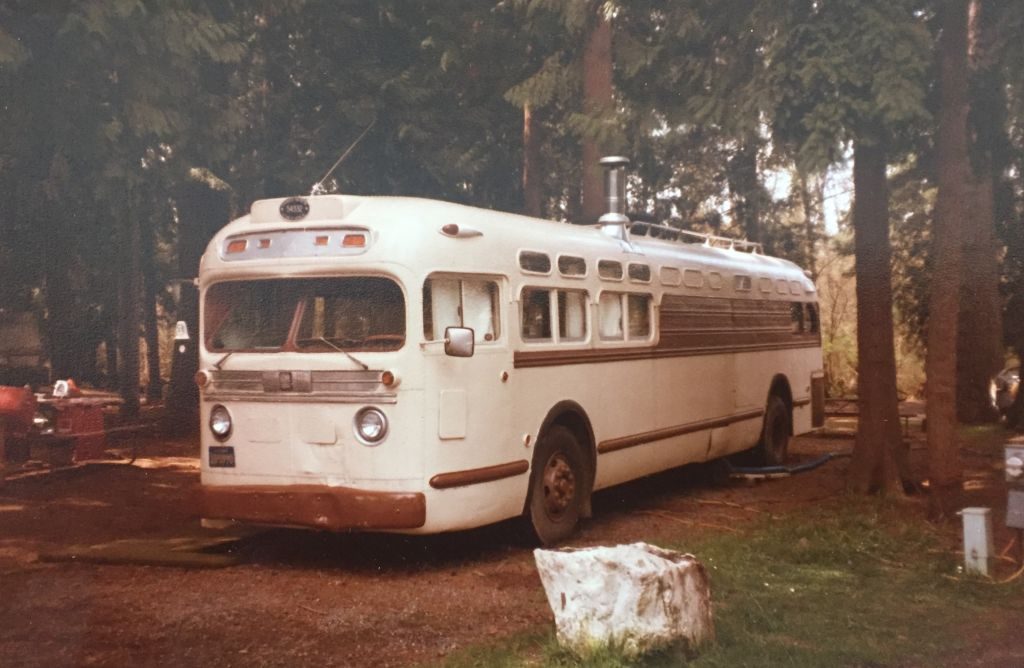

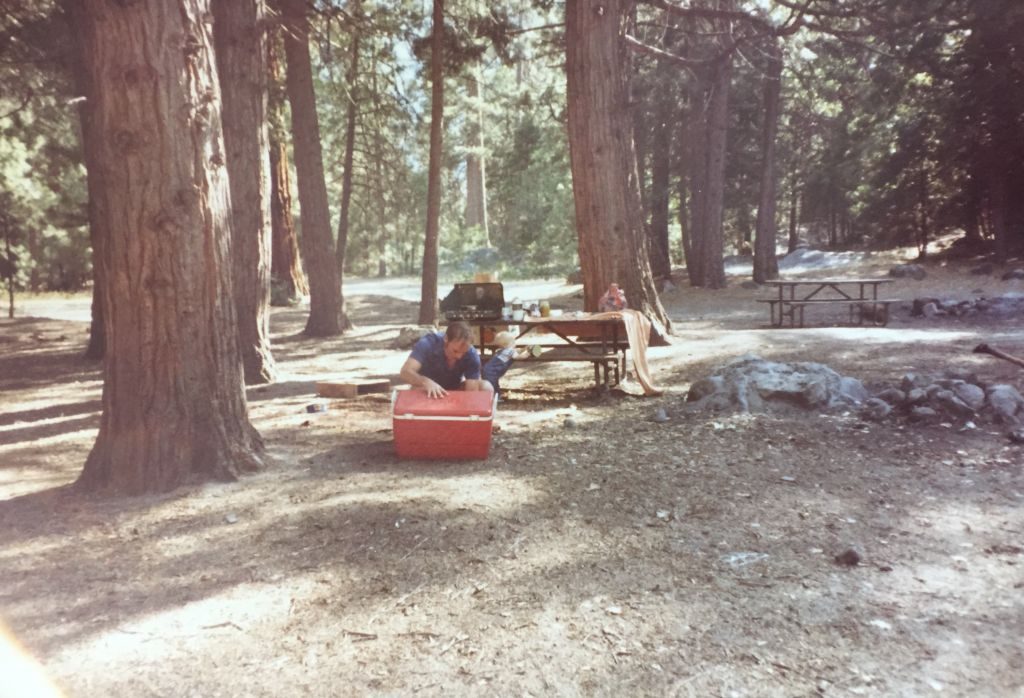

New York – Summer 1985
We arrive in Syracuse, where Dad’s family lives, and he gets a nice little gig to replenish the bank account. A little too good because we end up staying here for three years. My grandparents own a marina, so we park the bus on the property and live there for the first few months. When winter falls, we move into a house. The bus did have a fireplace but it didn’t stand a chance against the harsh New York winters. Mom shares a story about me running ecstatically down the hallway, never having had such a big home to run around in. It was on an island and we became lake people – no wonder we stayed for so long. I don’t have any memories of these years but I’ve studied the photos and heard the stories so much that I feel like they’re actual memories. I’m told I ate anchovies out of the tin with Dad and used to beg more for. You couldn’t pay me to eat one day.
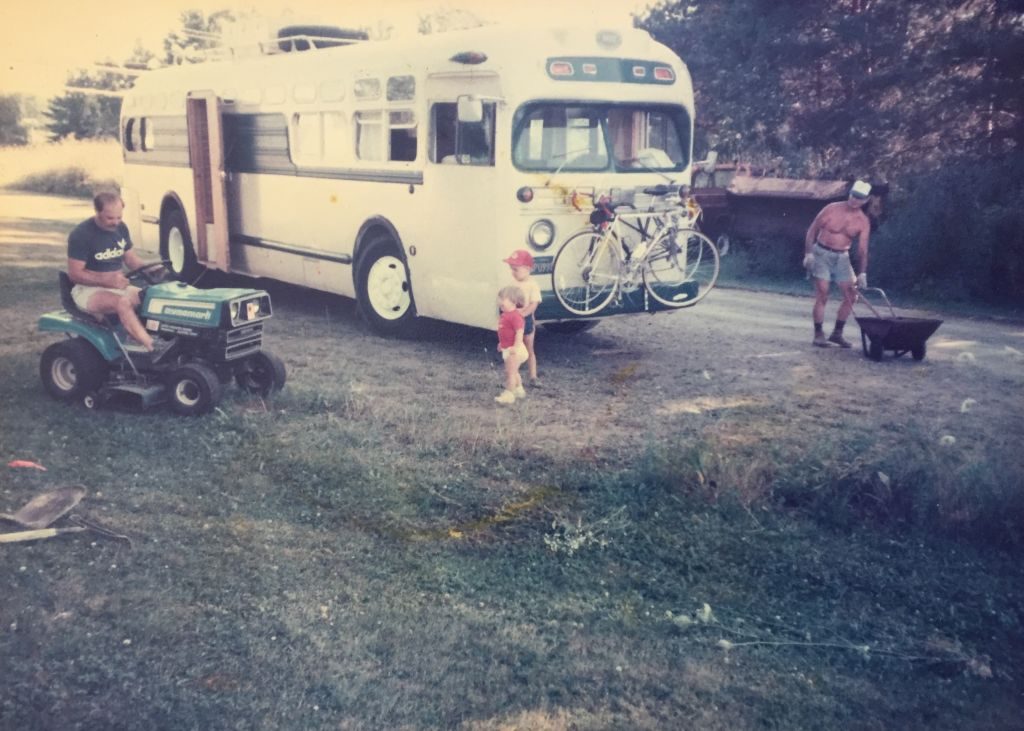
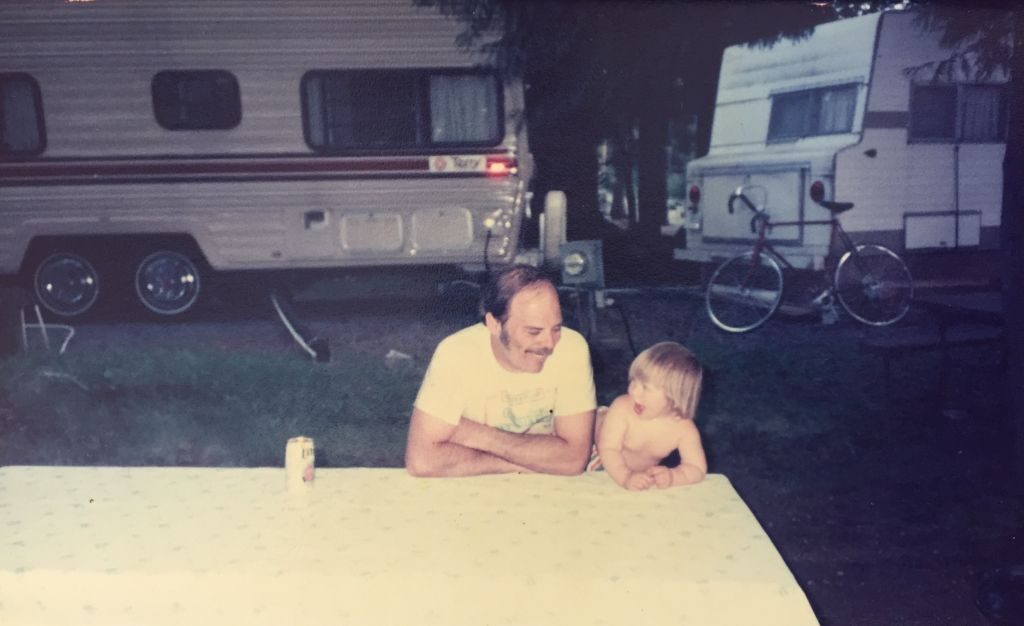

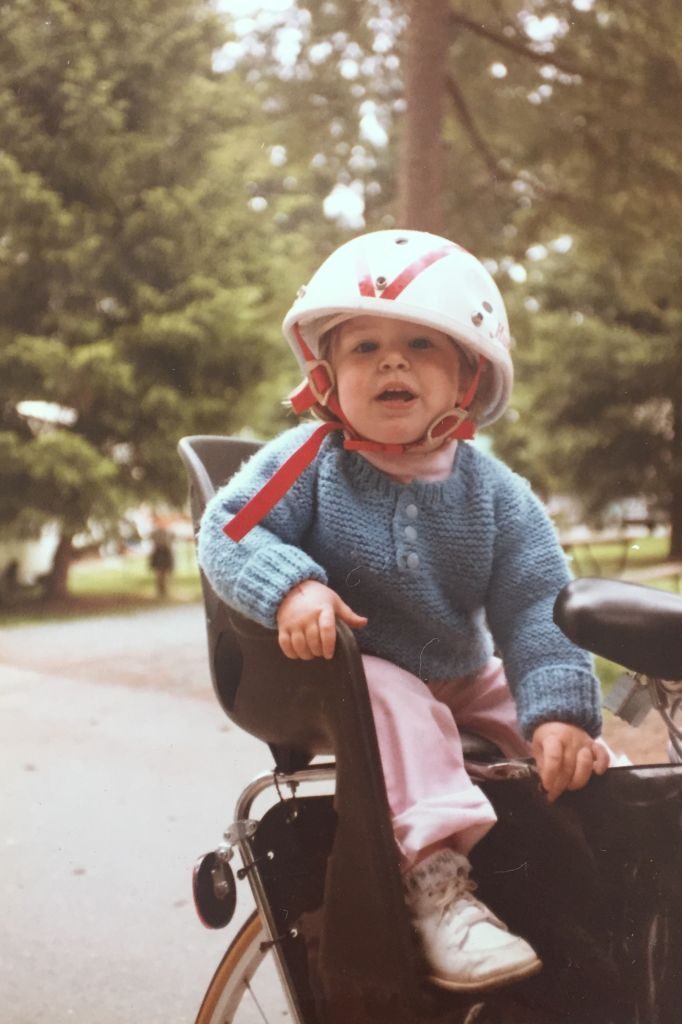
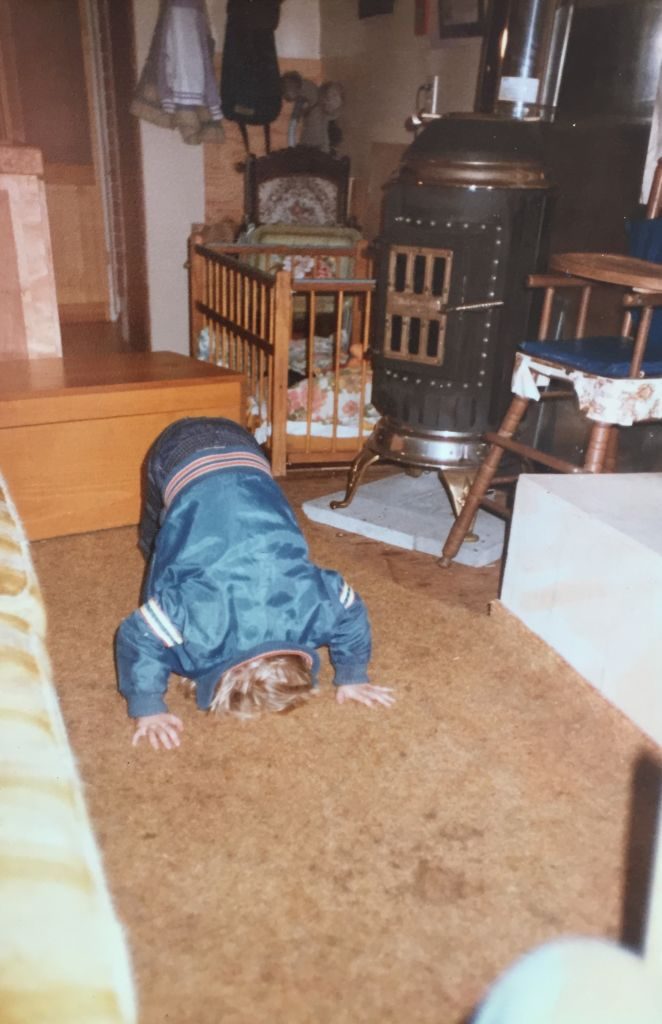
Despite enjoying the lake house and probably feeling a little grateful for a break from the bus, our journey doesn’t end here. We hit the road again in March 1988. The end goal was always Galveston, TX. When I ask my mom, “WTF? Galveston?” she just says that Dad always like the idea of Texas. Well, okay then. We quickly end up in central Florida, where, you guessed it, the bus breaks down again. With nice spring weather and one of Dad’s old Navy buddies in Kissimee, we gladly stop here and rent a house while repairing the bus.
Florida – Fall 1988
Eventually my parents sell the beloved but perpetually broken bus and buy another one, hopefully a more reliable one. But they also eventually buy a house. Levi starts elementary school. I go to preschool. Both parents are gainfully employed. And after all, Kissimmee seems like a fine place to raise a family.
We never move onto the second bus and we never make it to Galveston. No one is upset by this because, as you may have noticed, my parents are the type of people who go with the flow and make the most of their situation and surroundings. They’re non-planners, to a fault, some might say, but that’s their way of doing things and their choice for how to live their one life.
We filled our days with lots of adventures, but from the comfort of an air conditioned home with a backyard pool. My best childhood memories are of that pool and Florida’s beaches. The sand was my dad’s favorite place to nap. He’d wear himself out body surfing (such a dad thing to do) and then pass out in the sun. Mom would serve us peanut butter and jelly sandwiches from the cooler. They had to literally drag me and Levi from the ocean when it was time to go home.
My childhood didn’t include exotic international vacations, but it did have lots of local adventures and projects with my DIY-loving parents, and for these, I’m eternally grateful. I hope to one day follow in their footsteps and hit the road myself for an epic adventure. I’m not sure I can give this all up (the job, the car, the apartment with the rustic chic coffee table I just picked up at the flea market…) but I do yearn to get off the grid and see more of this country and world. This sort of simple life is so appealing, even if it’s just in short stints.
Here’s a breakdown of cost for the bus conversion project:
- $500 – bus
- $200 – paint for the exterior
- $1,200 – three-way refrigerator
- $500 – wood burning stove
- $250 – full size kitchen sink (where I used to get baths)
- $300 – apartment-sized gas oven purchased from Mexico with a rotisserie and four top burners
- $1,000 – six batteries to run appliances, etc.
- $50 – brick wall and slate/wood for the floor in the kitchen
- $350 – birch wood for the cabinets
- $100 – material and foam stuffing for cushions and seating
- $75 – material to make window curtains
- $75 – wall paneling for the bedroom, living room and bathroom
- $0 – queen size mattress (upcycled!)
- $150 – parquet wood flooring for the kitchen and entry way
- $75 – dutch door
Total for converted bus: $4,825
Total for #BusLife experience: priceless
